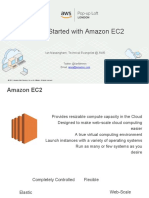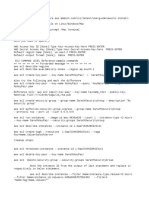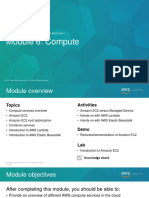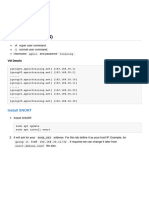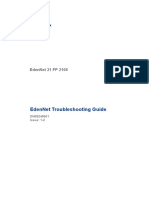User Data and Metadata
User Data and Metadata
In AWS, User Data and Metadata are two important concepts used for configuring and managing EC2 instances.
1. User Data (Instance Bootstrapping)
• User Data is a script that runs automatically when an EC2 instance is launched.
• It is used for bootstrapping (initial configuration), such as:
○ Installing software
○ Configuring settings
○ Downloading files
○ Running startup scripts
Example: User Data for Installing Apache
When launching an EC2 instance, you can provide the following script in the User Data section:
Amazon Linux / RHEL
#!/bin/bash
sudo yum update -y
sudo yum install httpd -y
sudo systemctl start httpd
sudo systemctl enable httpd
sudo chown ec2-user:ec2-user /var/www/html
echo "Hello from Apache Web Server!" > /var/www/html/index.html
sudo yum install java-1.8.0-amazon-corretto-devel
Ubuntu/Debian:
#!/bin/bash
sudo apt update -y
sudo apt install apache2 -y
sudo systemctl start apache2
sudo systemctl enable apache2
echo "Hello from Apache Web Server!" > /var/www/html/index.html
How to Add User Data?
• Go to AWS Console → EC2 → Launch Instance
• Under Advanced details, find the User Data section
• Paste the script and launch the instance
How to View User Data of a Running Instance?
curl http://169.254.169.254/latest/user-data
1. Metadata (Instance Information)
• Metadata provides information about the running EC2 instance.
• It can be accessed from inside the instance via the metadata service.
• The metadata URL:
• http://169.254.169.254/latest/meta-data/
• No authentication is needed since it is available only inside the instance.
Example: Get EC2 Metadata from terminal after connecting to Instance via SSH and run below code
TOKEN=$(curl -X PUT "http://169.254.169.254/latest/api/token" -H "X-aws-ec2-metadata-token-ttl-seconds: 21600" -s)
curl -H "X-aws-ec2-metadata-token: $TOKEN" -s http://169.254.169.254/latest/meta-data/
This will return metadata categories like:
ami-id
instance-id
public-ipv4
local-ipv4
hostname
security-groups
Fetching Specific Metadata
Instance ID
curl -H "X-aws-ec2-metadata-token: $TOKEN" -s http://169.254.169.254/latest/meta-data/instance-id
TOKEN=$(curl -X PUT "http://169.254.169.254/latest/api/token" -H "X-aws-ec2-metadata-token-ttl-seconds: 21600" -s)
curl -H "X-aws-ec2-metadata-token: $TOKEN" -s http://169.254.169.254/latest/meta-data/
This code is used to securely fetch metadata about an AWS EC2 instance by utilizing IMDSv2
Step 1: Request a Token:
TOKEN=$(curl -X PUT "http://169.254.169.254/latest/api/token" \
-H "X-aws-ec2-metadata-token-ttl-seconds: 21600" -s)
• curl -X PUT "http://169.254.169.254/latest/api/token" → Sends a PUT request to obtain an
IMDSv2 token.
• -H "X-aws-ec2-metadata-token-ttl-seconds: 21600" → Sets the token's time-to-live (TTL) to
21,600 seconds (6 hours).
• -s → Runs the command silently, suppressing progress output.
• TOKEN=$(...) → Stores the obtained token in a variable named TOKEN.
Step 2: Use the Token to Fetch Metadata:
curl -H "X-aws-ec2-metadata-token: $TOKEN" -s http://169.254.169.254/latest/meta-data/
• -H "X-aws-ec2-metadata-token: $TOKEN" → Sends the retrieved token as a header for
authentication.
• http://169.254.169.254/latest/meta-data/ → Queries the metadata service for instance-
related information.
• -s → Runs silently.
Code Output:
1. Retrieves an IMDSv2 token (to ensure secure access to instance metadata).
2. Uses the token to fetch instance metadata securely.
3. Outputs metadata information, such as:
○ ami-id → AMI ID of the instance
○ instance-id → Unique instance ID
○ instance-type → Type of EC2 instance
○ public-ipv4 → Public IP address (if assigned)
○ local-ipv4 → Private IP address
































